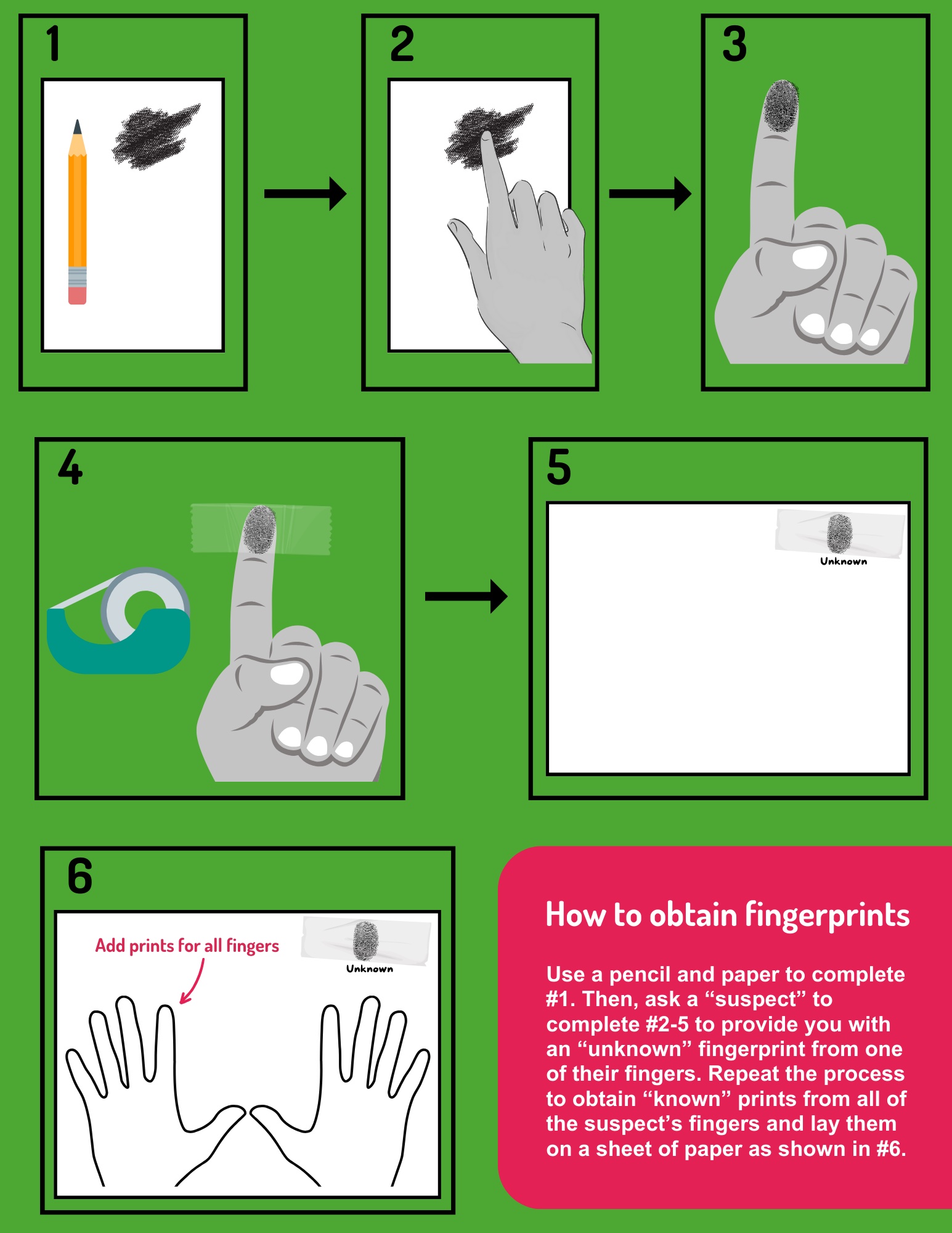Can you identify the suspect?
Forensic Investigators analyze fingerprints to help identify who was involved in a crime. Now it’s your turn to put the science behind crime-solving into practice!
Your challenge: Use real forensic science techniques to identify an unknown fingerprint!
The specs:
Step 1: Ask a friend or family member to be your “suspect” and leave a fingerprint on a piece of paper! They can follow the instructions in the “How to obtain fingerprints” section below. This will be your “unknown” fingerprint (you should not know which finger it came from)!
Step 2: Then, it’s your turn to repeat the process. Take fingerprints from all of your suspect’s fingers and lay them down on a sheet of paper.
Step 3: Use the information in “How to analyze fingerprints” to identify which finger the “unknown” print came from, with real forensic science techniques!
Supplementary Material
Use the information below to help you complete this challenge.
How to Obtain Fingerprints

How to Analyze Fingerprints
Evidence that is collected from a crime scene (like a fingerprint) is called the “unknown“. We can identify an unknown fingerprint by comparing it to known fingerprints.
The first step in the comparison process is to look at class characteristics, which tell you the overall pattern of a fingerprint. Every fingerprint has either an arch pattern, a loop pattern, or a whorl pattern. When a known fingerprint has a different overall pattern type than the unknown fingerprint, it can be ruled out.

When a known and unknown fingerprint have the same overall pattern, then the next step is to look at individual characteristics. These include more unique ridge features, such as ridge endings and bifurcations, which are called minutiae. The number and locations of minutiae make each fingerprint unique, so when these are similar in the unknown and known fingerprints, conclusions can be made as to who (and what finger) made an unknown fingerprint.








